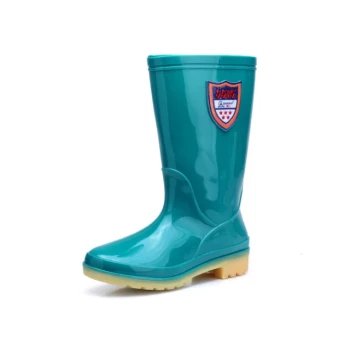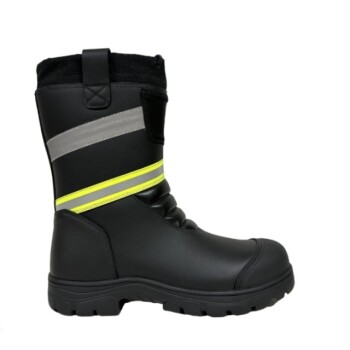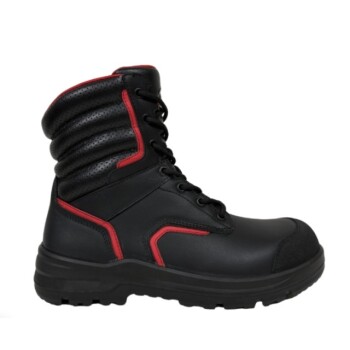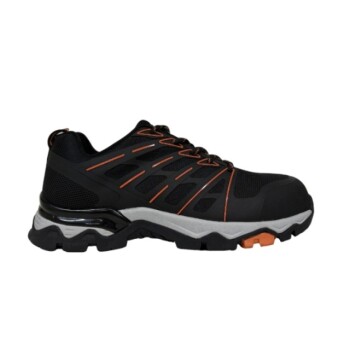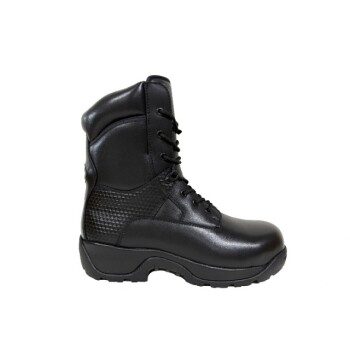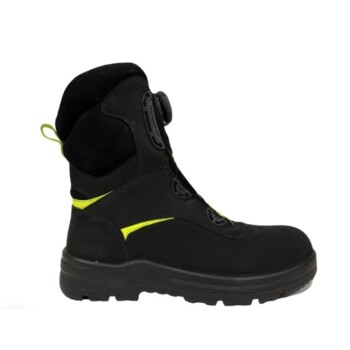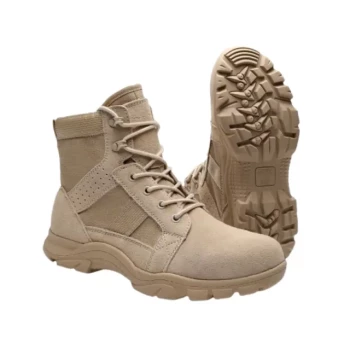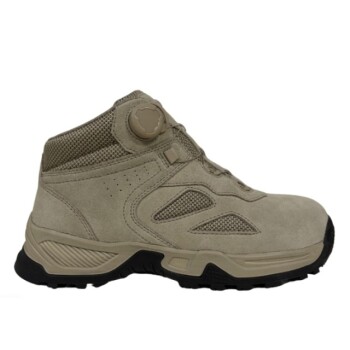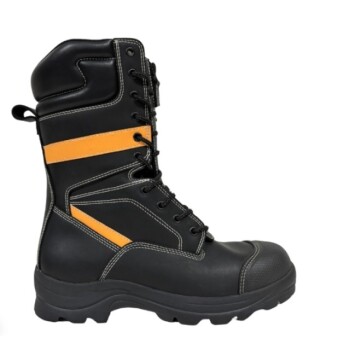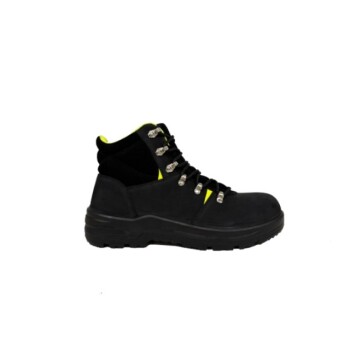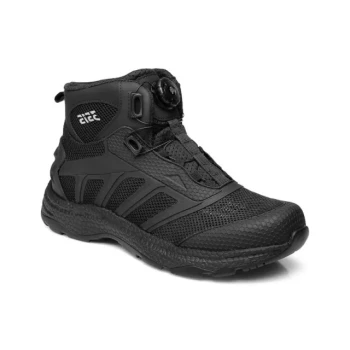The critical difference lies entirely in the outsole. Hiking shoes and boots improve traction through a purpose-built sole system featuring deep, aggressive lugs made from soft, sticky rubber compounds. This design actively grips uneven ground, sheds mud and debris, and maintains contact on slippery surfaces like wet rock—a stark contrast to the flat, hard rubber soles of casual shoes designed for predictable pavement.
Hiking footwear's superior traction isn't just about a grippy pattern; it's a system of lug design, rubber compound, and structural support working in concert to master unpredictable terrain. Casual shoes are engineered for flat, man-made surfaces and simply lack this specialized capability.
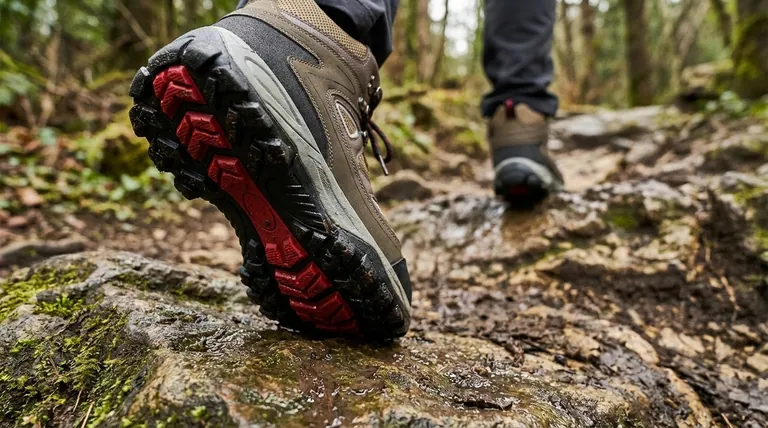
The Anatomy of Grip: Deconstructing the Hiking Outsole
To understand why hiking footwear excels, you must look at the specific engineering choices made for the bottom of the shoe. Each element serves a distinct purpose in creating a secure connection with the ground.
Lug Design and Depth
Lugs are the deep, protruding patterns on the outsole. Unlike the shallow tread on a sneaker, hiking lugs are deep and aggressive, allowing them to dig into soft surfaces like dirt, mud, and gravel for a secure foothold.
Their wide spacing is also intentional. This design prevents mud and small rocks from getting packed into the sole, which would effectively create a smooth, slick surface and eliminate all traction.
The Rubber Compound
The material itself is a crucial variable. Hiking outsoles use softer, "stickier" rubber compounds that can better conform and adhere to the micro-textures of hard surfaces like rock slabs and boulders.
Casual shoes, by contrast, typically use harder, more durable rubber formulated to resist abrasion from pavement. While long-lasting on concrete, this harder material is significantly less effective on wet or irregular natural surfaces.
Midsole Stiffness
The midsole, the layer between your foot and the outsole, also plays a key role. A stiffer midsole, common in hiking boots, creates a stable platform.
This rigidity prevents your foot from bending over sharp rocks and ensures that more of the outsole's lugs remain in firm contact with the ground, especially when navigating jagged or uneven terrain.
Understanding the Trade-offs: Hiking Shoes vs. Hiking Boots
While both offer superior traction to casual footwear, the choice between a hiking shoe and a hiking boot involves balancing support against weight and flexibility.
The Case for Hiking Shoes
Hiking shoes are lighter and more flexible, resembling a rugged trail-running shoe. They are ideal for well-maintained trails and when you are carrying a light daypack.
Their flexibility allows for a more natural stride, but they offer less ankle support and protection from rocks compared to a full boot.
The Case for Hiking Boots
Hiking boots provide more substantial ankle support and are built with more durable materials. Their taller cut helps keep out debris and water.
The added stiffness and support are critical when carrying a heavy backpack, as it helps prevent ankle rolls and provides a more stable platform for the outsole to do its job effectively on technical, off-trail terrain.
Making the Right Choice for Your Hike
Your choice of footwear should be directly aligned with the demands of your planned activity.
- If your primary focus is day hiking on established trails with a light pack: A hiking shoe provides excellent traction with less weight and greater comfort.
- If your primary focus is multi-day backpacking with a heavy pack: A hiking boot offers the critical ankle support and stiffness needed to maintain stability and effective traction under load.
- If your primary focus is navigating rough, off-trail, or mountainous terrain: The superior protection, support, and rigidity of a hiking boot are essential for safety and performance.
Ultimately, selecting the right footwear is the foundational step for a safe and confident journey on any trail.
Summary Table:
| Feature | Hiking Footwear | Casual Shoes |
|---|---|---|
| Outsole Lug Depth | Deep, aggressive lugs | Shallow, flat tread |
| Rubber Compound | Soft, sticky for grip | Hard for pavement durability |
| Mud Shedding | Wide-spaced lugs prevent clogging | Prone to mud/debris buildup |
| Terrain Suitability | Uneven, slippery, natural surfaces | Predictable, flat, man-made surfaces |
Ready to equip your customers with superior traction?
As a large-scale manufacturer, 3515 produces a comprehensive range of hiking and outdoor footwear for distributors, brand owners, and bulk clients. Our production capabilities encompass all types of shoes and boots, engineered with the precise lug patterns and rubber compounds needed for maximum grip and durability.
Let us help you provide the right footwear for any trail. Contact our team today to discuss your manufacturing needs.
Visual Guide

Related Products
- Safety Footwear Wholesale Manufacturer for Custom OEM/ODM Production
- Factory-Direct Wholesale Canvas Boots with High-Traction Rubber Soles
- Wholesale Safety Footwear Manufacturer for Bulk & Custom OEM Orders
- Factory Direct Wholesale Rain Boots Durable Waterproof & Fully Customizable
- High Performance Fire-Retardant Waterproof Safety Boots
People Also Ask
- Is it normal to wear shoes in the house? A Guide to Hygiene, Comfort & Culture
- Is safety-toe as good as steel toe? Choose the Right Protection for Your Job
- What cultural and environmental considerations are tied to wearing shoes indoors? Balance Hygiene, Tradition, and Foot Health
- Do snake bite boots work? Your Ultimate Guide to Effective Snake Bite Protection
- What are the cultural perspectives on wearing shoes in the house? A Guide to Home Etiquette & Hygiene



